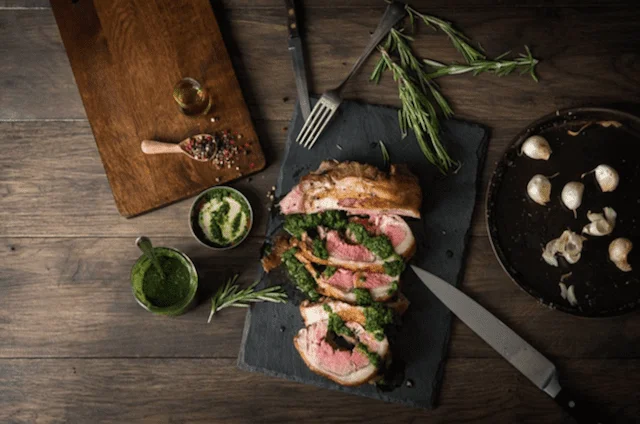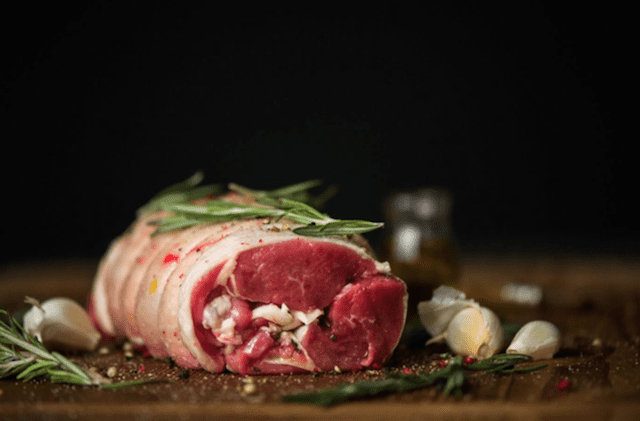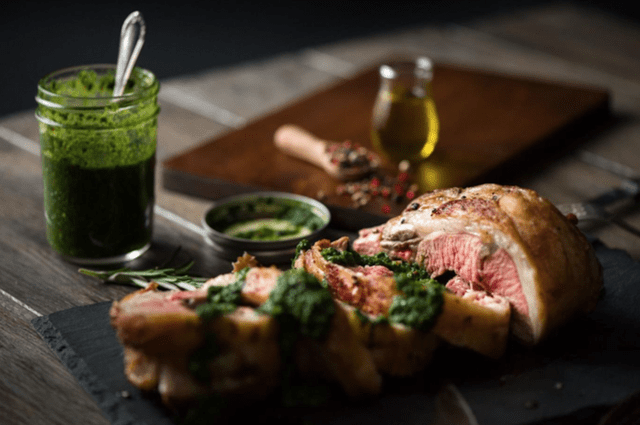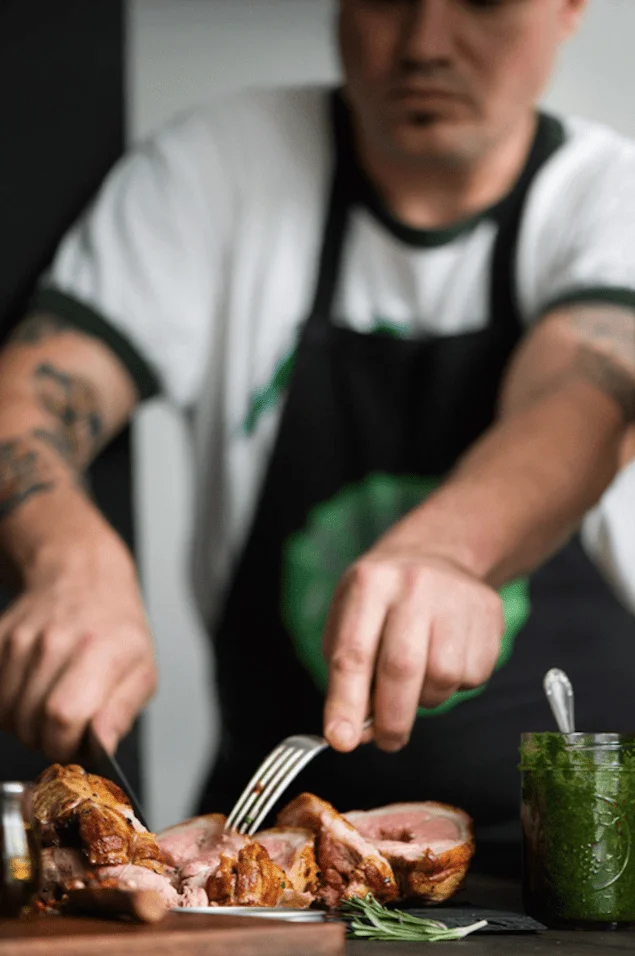We love lamb. Especially when it is roasted low and slow in the cool winter months. Plus, it is a great main dish to impress your holiday guests. Find out the best cuts and how to prepare them for success every time.
By HelloFresh
Best Cuts for Roasting
Leg of Lamb
Whether on or off the bone, the leg of lamb is the ultimate winner for us. Consisting of the shank and the juicy sirloin – it’s got it all. If you ask your butcher for a leg, they may offer it to you in the following formats: sirloin end, shank end and short leg and they are all really great for a roast! This meat is so tender and flavorful, that it needs minimal seasoning. A bit of salt, pepper and rosemary… maybe some garlic, will do the trick. If you asked for it deboned you can roll and stuff it with a variety of delicious things. You could try this rolled lamb leg stuffed with basil and parmesan.
Rib Rack
This is normally made up of about eight ribs and is a pretty iconic piece of meat. It roasts like a charm. Again, keep the seasoning low key – just season it and if you’re feeling fancy you can crust it too. Try this herb crusted lamb recipe – I adore it!
Shoulder
The shoulder is pretty generous in terms of meat and nice and fatty! Yes, I’m saying fatty with an air of delight, because it means it’s extra juicy. Eating fat doesn’t make you fat, in fact fat has a lot of very important nutrients. Melting down to deliciousness should be fat’s slogan in this scenario. Make sure you roast this piece for longer on a slightly lower heat because it’s a bit tougher than the leg and rib. But it’s every bit as appealing.
Top Round (leg muscle)
This piece of leg muscle is much more tender than others. If you roast this bad boy, the flavors that follow will wow even the most critical palette. You can slice it up and add it to sandwiches, salads or have it with chunky chips and tabasco.
Seasonings
Marinades vs Pastes and Dry Rubs
Marinades are normally used to make tougher meats, like mutton or brisket, and their tissues more tender. In the case of an already tender meat like lamb, marinating can actually act to make it tough. So, when you are working with lamb, I’d advise you to just use simpler seasonings like salt, pepper, herbs and spices, dry rubs or pastes rather than anything complex or liquid. You can rub on some butter and a bit of oil to make sure the flavors come out. Not sure what kind of sauce to serve with your lamb? Try this chimichurri recipe.
Top tip
Adding a bit of lemon also helps to stop the herbs and spices from burning!
Our favourite seasoning for roast lamb
Make a paste out of salt, pepper, garlic, sweet paprika powder and cumin and rub it on the lamb. It’s a bit different and it’s oh so yummy. Pound it with a mortar and pestle for best results.
Basting
For lamb that oozes exquisite scrumptiousness you should baste your meat every 15 minutes while it is cooking in the oven. Basting is when you pour the juices and fat that have escaped from the meat back over the meat to keep it moist and to add flavour.
Temperatures
Rare
Straight out of the oven: 50°C (122°F)
Temperature after resting in a warm place: 60°C (140°F)
Medium Rare
Straight out of the oven: 59°C (138°F)
Temperature after resting in a warm place: 65°C (149°F)
Medium
Straight out of the oven: 65°C (149°F)
Temperature after resting in a warm place: 69°C (156°F)
Well Done
Straight out of the oven: 70°C (158°F)
After resting: 75°C (167°F)
Without Thermometer
Set your oven temperature to gas 4-5, 180°C, 350°F.
Rare
20 minutes per 500g or about one pound (and then an additional 20 minutes)
Medium
25 minutes per 500g or about one pound (and then an additional 25 minutes)
Well Done
30 minutes per 500g or about one pound (and then an additional 30 minutes)
Resting time
If you haven’t let your meat rest after it has roasted, then you haven’t truly lived. Eating meat hot out of the oven may sound awesome, but if you leave it to rest for about 15 – 20 minutes, it will allow the juices to distribute and will give you a juicier, more tender bite.
Take your meat out of the oven and cover the meat itself completely in foil – so that the whole piece of meat is insulated.
Letting your lamb rest, away from the intense heat of the oven allows the fats and juices, which have been pushed to the middle of the meat to diffuse back into the rest of the meat. This means the meat will lose less of the moisture and remain tender and delicious. If you want really juicy meat you should let it cool down until the most inner part of the meat has cooled to 60C for medium. (see temperatures for rare, medium rare & well done)















